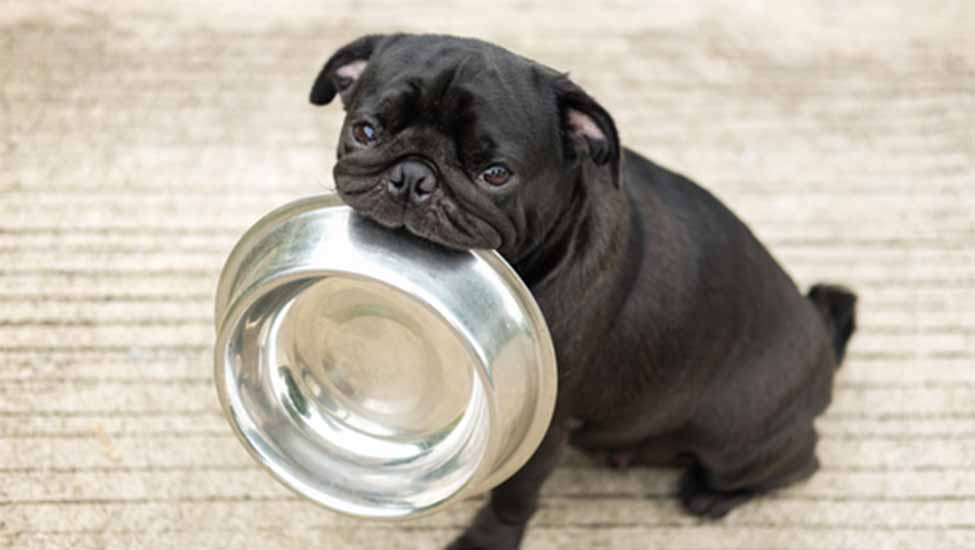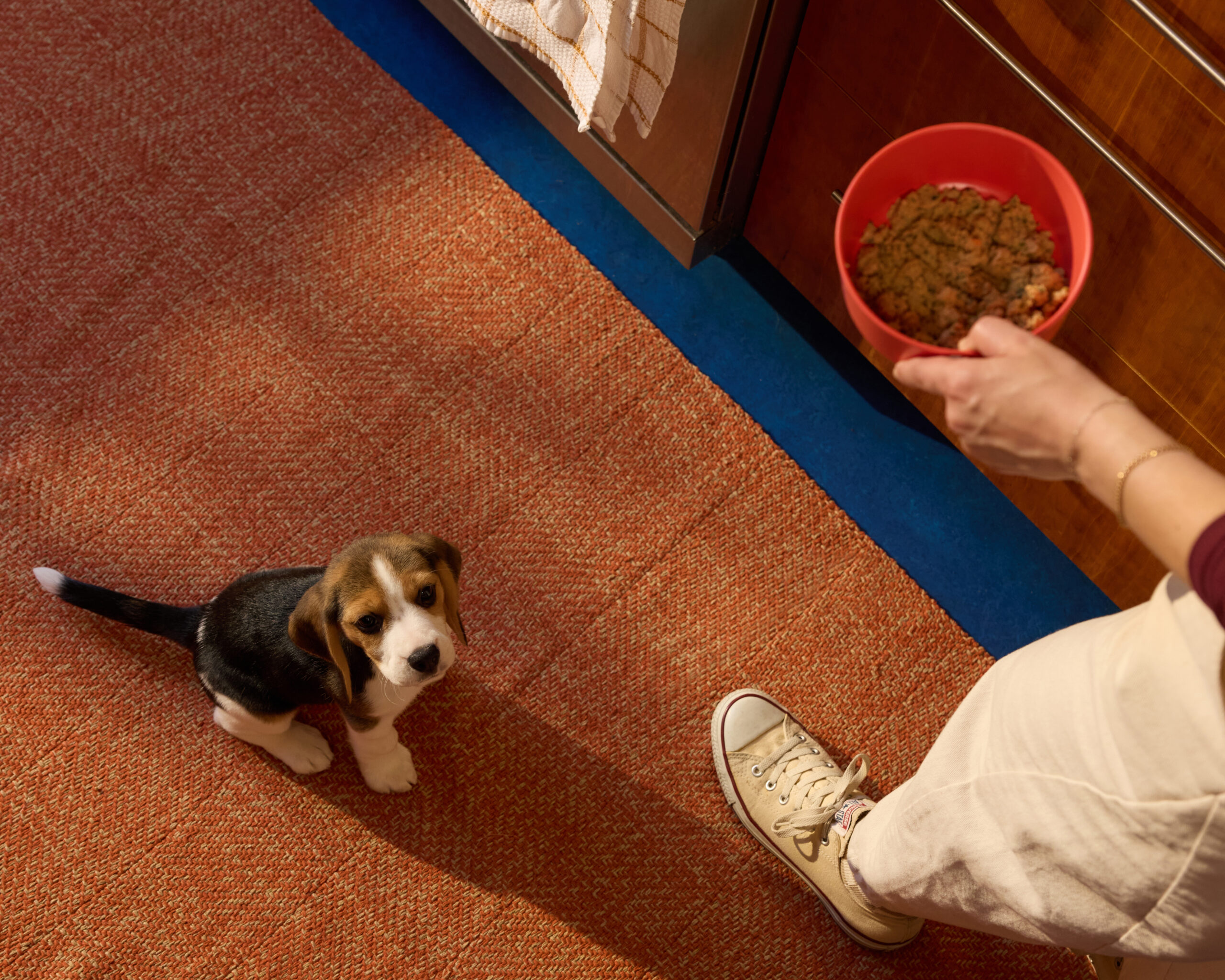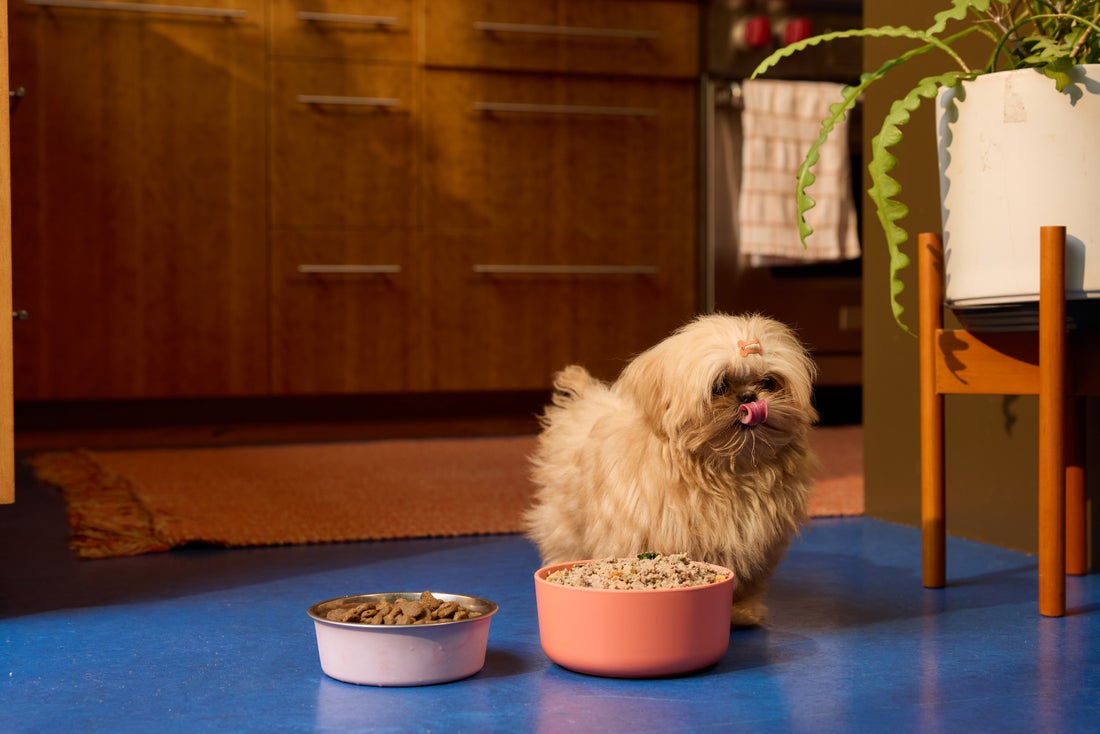Hey Ollie blog readers! We’re offering you an exclusive 60% OFF your starter box! Try now!
As humans, we’ve been conditioned to read food labels closely (no high fructose corn syrup allowed!) We need to train ourselves to look just as skeptically at our dog’s food label. Commercial brands often contain ingredients that aren’t healthy for pups—they are generally used for one of two reasons, because they’re inexpensive, or because they help the food stay fresh longer. Either way, you don’t want your pup to consume these potential toxins on a regular basis. Before you open another bag (or can), review the label and if you see any of the following ingredients you may want to reconsider:
1. Melamine
This type of plastic contains nitrogen, which has been added to dog food to make it look like it contains more protein, says Gary Richter, veterinarian and author of the Ultimate Pet Health Guide. “Ingesting melamine is definitely toxic,” he explains. “It can cause kidney failure, depending on the size of the dog and the dose, and death.” In fact, it was responsible for one of the worst dog food recalls ever in 2007. Even today, melamine testing is still not mandated so always ask questions if you’re not sure what your dog’s food contains.
2. BHA, BHT and Ethoxyquin
These are artificial preservatives found in some traditional dog foods and treats, used to extend their shelf life. “There are concerns that these chemicals can be harmful with long-term exposure and ingestion,” says Richter, who recommends avoiding any artificial ingredients in food or treats. For example, ethoxyquin, which is used as a fat preservative, is also utilized as a pesticide. One study found that it elevates liver enzymes in the blood and raises hemoglobin pigment in the liver. If you see these on a label, back away!
3. Propylene Glycol
This artificial additive is used to maintain texture, keeping foods soft and moist. While PG is generally recognized as safe by the FDA, it’s still an artificial ingredient, and Richter says he wouldn’t recommend feeding it to dogs. Additionally, there’s often confusion between propylene glycol and ethylene glycol (antifreeze). The latter is extremely toxic to dogs, although the former has been used in antifreeze as a non-toxic alternative.
4. Carrageenan
An ingredient extracted from red seaweed, Carrageenan is used as a thickener to maintain consistency, specifically in wet dog food. It has been determined safe by the FDA and AAFCO as a food additive, however the “degraded” variant, called poligeenan (which is not permitted in food), has been shown to be potentially harmful. Studies indicate that it can lead to GI inflammation and possibly cancer, Richter says. Our verdict: avoid it!
5. Meat Meal
If you see any time of protein “meal” on a dog food label, step away! This is the product of a process called rendering, where the scraps of diseased and dead animals are heated up: “Meat producers take all of the leftover bits and scraps, and cook them down to remove the fat,” Richter explains. “After the fat is removed, meat meal remains.” While meat meal does contain protein, the quality of nutrition from it can vary wildly depending on the animal parts it contains.
6. Food dyes or corn syrup
There’s no reason to artificially color pet food—it’s done to make it look more appealing to humans! And your pup’s food doesn’t need to be sweetened, either—especially not with an ingredient like corn syrup that has a high glycemic index with no health benefits. “Dogs don’t even want sweet in their foods,” Richter says. “Both should be avoided.”
7. MSG
MSG or Monosodium Glutamate is used in both human and dog food as a flavor enhancer. It is generally not believed to be good for either humans or pups and many are allergic to it. In addition to adding no nutritional value, MSG can also be used to boost flavor in foods that contain lower quality ingredients. For both of these reasons, you should keep food with MSG away from your pup. If you eat Chinese or other fast food with MSG in it on occasion, unless you’re allergic to it you should be just fine!!
8. Sodium Hexametaphosphate
This is one of those ingredients that falls under the category of if you can’t pronounce it you may want to reconsider letting your pup eat it. Sodium Hexametaphosphate is an additive used in dental dog foods to reduce tartar build-up. While this may sound appealing due to the fact that most dogs need to be put under anesthesia for even routine dental cleanings, it comes with a caveat. It can have adverse effects when ingested. If you are worried about it doing more harm than good, consider choosing foods that don’t include this ingredient and simply brushing your dog’s teeth instead.
Once you start peeping dog food labels, you’ll start to notice how common these toxic ingredients really are. With Ollie, you can rest assured we only include human-grade, high-quality meats, fruits, and veggies in our recipes. Our recipes feature delicious proteins including beef, chicken, turkey, and lamb.
We add nourishing liver and organ meats and pack the recipes with superfoods like kale, chia seeds, blueberries, and pumpkin.
We never use inexpensive fillers like wheat, corn or soy, by-products, or preservatives. Only the best for your pup. To keep things fresh and safe, our food is cooked gently and portioned into individual packages and frozen.
Your pup’s meals will come with instructions for feeding including how much food to give at each meal. You can store Ollie packs in the freezer for up to three months. You’ll thaw them in your refrigerator where you can store them for up to two weeks unopened and four days after opening. We hope all of our pet parents are excited to share our delicious recipes with their best friends each day.
We know the pups get very excited to see the Ollie puptainers come out of the refrigerator at mealtimes – it means the good stuff is on the way!
The Ollie blog is devoted to helping pet parents lead healthier lives with their pups. If you want to learn more about our fresh, human-grade food, check out MyOllie.com.
Tagged As:

The nutrition your dog needs,
the food they want.

Enjoying our articles? Subscribe our Newsletters and get new articles directly to your inbox
You might also like
9 October 2025
5 MINS READ
Thrive From Day One: Choosing the Healthiest Food for Your New Puppy
As you welcome your new furry family member, one of the most impactful choices you’ll make is what to put in their food bowl. Providing the right nutrition from the start is the foundation for a l…
by Ollie Pets
9 October 2025
5 MINS READ
Should Your Dog Switch to Fresh Food?
As a pup parent, you’re always looking for ways to help your dog live the happiest, healthiest life possible. You’ve likely heard the buzz around fresh dog food, but what does it really mean? Mo…
by Ollie Pets
9 October 2025
6 MINS READ
Beyond Kibble: Fresh Food Alternatives for Your Dog’s Health
For a long time, dry kibble has been the default, but more and more pup parents are starting to wonder if it’s really the best option for their dogs. The good news is that there are many dog food …
by Ollie Pets







